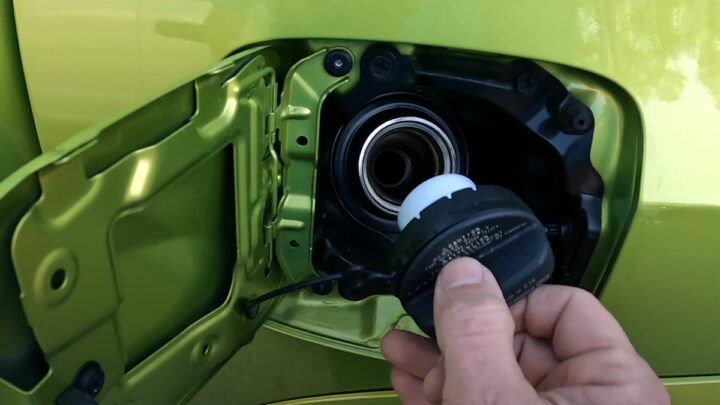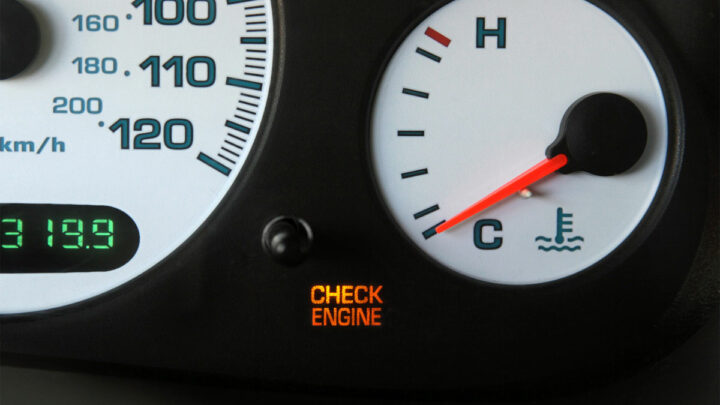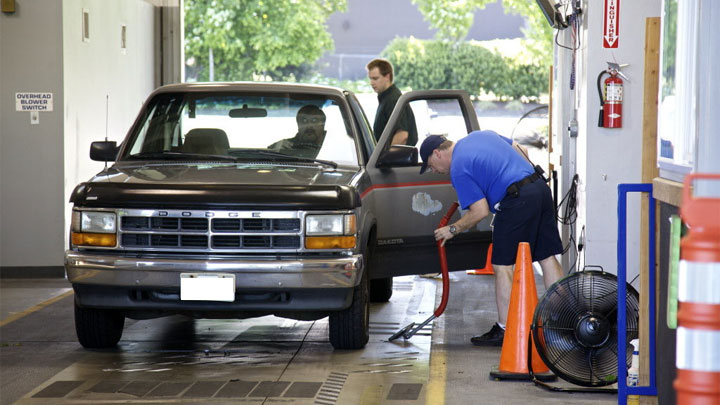5 Symptoms of an EVAP Leak (and Repair Cost)
One topic often misunderstood in the world of automotive repair and maintenance is that of evaporative emissions. EVAP systems have now served as regular equipment on all American vehicles for a number of decades.
However, such systems do, at times, experience leaks that must be addressed. But how do you know if you have an EVAP leak? What caused it? And most importantly, how much are repair costs going to run?

What is an EVAP Leak?
An evaporative emissions leak is essentially an unintended venting of fuel vapor into the atmosphere that occurs when the system intended to capture such vapors (EVAP system) becomes compromised. This is perhaps best explained, by first diving into the particulars of the EVAP system itself.
The modern evaporative emissions system is engineered to capture all vented fuel vapors emitted from the fuel system, before ultimately blending these vapors with fresh air and reintroducing them into the intake tract for combustion.
The EVAP system itself features several key components, including the EVAP (charcoal) canister, fuel tank, fuel tank vent, and EVAP purge solenoid.
Essentially, an EVAP system leak can occur at any of these distinct components, or at the distribution lines running there-between. When this occurs, raw fuel vapors are allowed to leach into the atmosphere, thus causing unnecessary pollution.
Common Signs of an EVAP Leak
Spotting an EVAP leak can be tricky, but there are several secondary symptoms that can help you identify the problem, with some being more obvious than others. The ability to recognize these symptoms is step one when it comes to fixing the issue as quickly as possible.
#1 – Check Engine Light

In almost every case, the presence of an EVAP leak will lead to the illumination of a check engine light and logging of at least one active diagnostic fault code.
Some of the most common EVAP faults logged under such circumstances are P0440, P0442, P0455, P0456, and P0457.
#2 – Reduced Engine Performance

Major EVAP system leaks are also known to cause a noticeable decrease in engine performance. This is due to the reduction in fuel vapors available for combustion that would otherwise be present. You might notice that your vehicle accelerates more sluggishly or lacks the power that it previously had.
#3 – Reduced Fuel Economy

Going hand-in-hand with the issues above, fuel economy also tends to drop when a vehicle is saddled with evaporative emissions issues. This, also, is due to the lack of fuel vapors available for combustion that are instead vented to the atmosphere under these circumstances.
#4 – Starting Issues

Another common symptom related to evaporative emissions leaks is difficulty starting an affected vehicle, or prolonged cranking. These types of issues are caused when fuel/air ratios are skewed unfavorably, thereby preventing efficient combustion from taking place.
#5 – Increased Emissions Output

As you might guess, EVAP system leaks also unfavorably influence a vehicle’s emissions output. Under such circumstances, a vehicle’s exhaust output tends to run rich.
In addition, the bulk of fuel vapor typically contained by the EVAP system is vented to the atmosphere. This can present problems when faced with mandatory emissions testing in some states and municipalities.
See Also: Failed Your Emissions Test? (This May Be Why)
Possible Causes of Your EVAP Leak
Evaporative emissions system leaks can be caused by one of several different underlying issues, a number of which can prove relatively difficult to pinpoint. If you’re aware of the potential causes, it’s going to help you in making a timely diagnosis.
#1 – Loose/Faulty Gas Cap

The most common cause of EVAP leak-related faults is a loose or faulty gas cap. It’s even possible the gas cap is missing entirely. Don’t stress if you accidentally left the cap at the gas station. Countless others have done the same.
Luckily, this is easily and relatively inexpensively resolved with a quick trip to virtually any local auto parts store (or ordering online).
Most replacement fuel caps can be purchased for less than $30 and installing one is normally extremely easy. It’s a good idea to assume the gas cap is the culprit until it’s ruled out.
#2 – Damaged EVAP Components
Yet another potential cause of EVAP system leaks is the degradation of key system components from age, or impact.
Some of the most commonly affected components within the EVAP system include the charcoal canister, the EVAP purge solenoid, the purge valve, and the vent valve. In fact, even a compromised fuel tank can lead to EVAP system leakage.
#3 – Faulty Connections/Compromised Lines
EVAP systems are also commonly affected by distribution lines that have become rubbed or have developed pinhole leaks. These lines are used throughout the EVAP system, in order to route captured fuel vapors wherever necessary.
Additionally, it is also possible for leaks to develop at various connection points between these lines.
Is It Safe to Drive with an EVAP Leak?
Yes, it is safe to drive a vehicle that has one or more EVAP system leaks. The odds of causing damage to vehicle components is very low in the short term so if you can’t replace your gas cap or make it to the repair shop right away, it won’t be the end of the world.
However, this is not to say that an EVAP leak shouldn’t be taken seriously.
Quite the contrary, leaks of this type lead to a reduction in overall engine performance, and can even reduce the affected vehicle’s fuel economy. Nonetheless, the vehicle in question should still be able to be driven as it otherwise would.
In rare cases, one might notice that their vehicle begins to experience starting-related issues. If this were to occur, use of the affected vehicle should be discontinued until proper repairs can be made (you don’t want to get stranded somewhere).
It’s also worth mentioning that the presence of one or more EVAP system leaks can cause a vehicle to fail mandated emissions testing, where such testing is required.
In any event, the root cause of a vehicle’s EVAP system leak should be thoroughly diagnosed and repaired at your earliest convenience. Doing so can save money on fuel in the long run, while also making sure that your vehicle’s engine continues to run in the most efficient manner possible.
If you do not feel comfortable tackling such repairs yourself, an appointment should be made with a trusted automotive service center as soon as possible.
If you’re not confident in your ability to fix an EVAP leak on your own, it’s best to book an appointment with a trusted automotive service center and let the pros deal with it.
Repair Costs
The exact cost associated with repairing an EVAP leak can vary substantially from one instance to the next. Luckily, the most common cause of EVAP system leakage, a faulty gas cap, can be fixed for approximately $30.
On the other hand, if leak repair becomes more involved and affects additional components such as the EVAP purge solenoid or EVAP canister, one can quickly tally up a repair bill of up to $500-$600.
How EVAP Leaks Affect the Environment

As most are well aware, a vehicle’s evaporative emissions equipment is part of the modern automotive emissions system. All equipment of this type is designed to reduce the environmental impacts of internal combustion engine usage.
Other emissions-related components found in today’s vehicles include catalytic convertors, EGR valves, and O2 sensors.
Whenever such equipment becomes compromised to a significant degree, thereby negating optimal performance, an increased number of pollutants are introduced into the environment.
In the case of an EVAP leak, raw fuel vapors are allowed to be vented to the atmosphere, rather than being burnt after reintroduction into the intake tract.
These raw fuel vapors can contribute to the formation of ground-level ozone, a major component of smog. Ozone irritates the respiratory system, aggravates asthma, and can cause lung damage.
Additionally, some of the hydrocarbons in fuel vapors are toxic and can be carcinogenic. Venting these vapors into the atmosphere not only harms the environment but also poses health risks to humans and wildlife.
- 4 Symptoms of a Bad Transfer Case (and Repair vs Replacement Costs) - May 8, 2024
- “Check Emission System” Light On In Your Honda/Acura? - May 6, 2024
- P06dd Code (Symptoms, Causes, and How to Fix) - May 3, 2024
